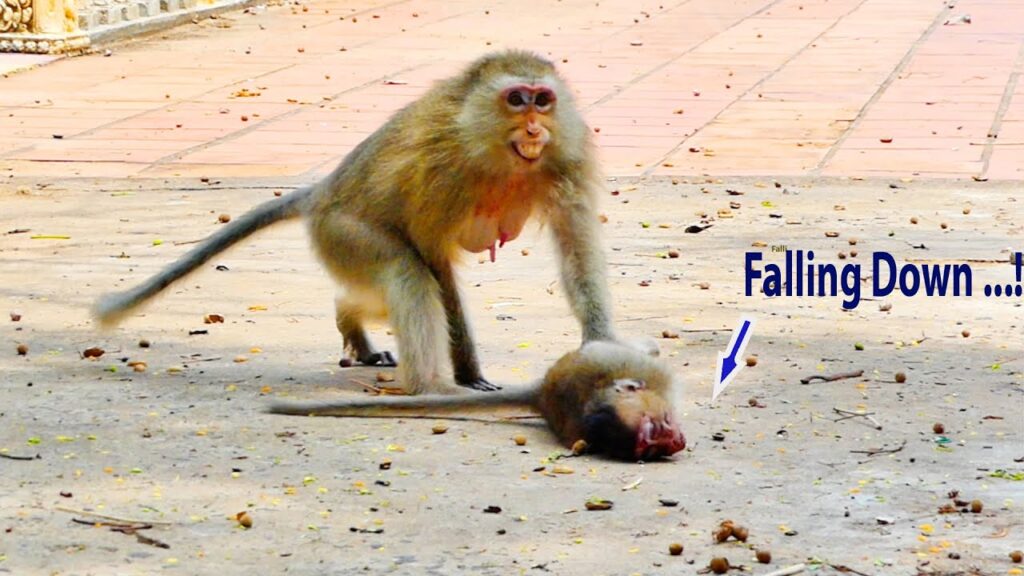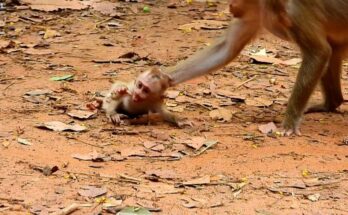In the heart of the forest, where life and death constantly intermingle, a deeply sorrowful sight brings a hush to the surroundings—a monkey so weak it can no longer eat, walk, or even lift its head. Once lively and agile, the animal now lies motionless beneath the trees, its breathing shallow, eyes dull, and body frail. It is a haunting image of suffering, one that reveals the harsh reality of nature when illness, injury, or starvation take their toll.
The monkey, possibly an older adult or a sick juvenile, appears to have been declining for some time. Its limbs are thin, trembling, and unresponsive. Fur that was once thick and healthy is now matted and falling out in patches. Its ribs are clearly visible beneath its skin, and flies circle its body, sensing weakness. Attempts to move are met with failure—its legs collapse beneath it, and even lifting its head requires all the strength it can muster.
Monkeys, like many wild animals, are incredibly resilient. They endure minor injuries, navigate harsh climates, and survive predators using sharp instincts and social cooperation. But when disease, chronic malnutrition, or severe trauma strike, even the strongest can become helpless. In such moments, the line between survival and death becomes thin and unforgiving.

What makes this scene even more heart-wrenching is the monkey’s isolation. Whether it was abandoned by its troop or fell behind due to its condition, it now suffers alone. In social species like monkeys, group bonds are critical for survival. Troop members provide grooming, protection, and food-sharing. But nature can be cruelly pragmatic. If a member becomes too weak to contribute or risks attracting predators, the group may move on. This is not a lack of empathy but a harsh instinct for preservation.
Observers of wildlife know that not all stories have happy endings. The monkey’s inability to eat is especially worrying. In the wild, loss of appetite is often a final sign—an indication that the body is shutting down. Whether the cause is a lingering infection, a poisoning from contaminated food, or a slow decline from injury or chronic disease, the result is the same: a once vibrant creature fading away, day by day.
This painful sight reminds us of the fragile balance animals maintain in their natural habitats, especially in environments impacted by human activity. Deforestation, pollution, habitat loss, and food scarcity contribute to declining health in wild animal populations. When food is scarce or water sources are polluted, even healthy animals begin to suffer—and the weakest, like this monkey, are the first to fall.
Witnessing such suffering is difficult. It moves us deeply because it touches something universal—the desire to live, and the pain of not being able to. The image of this monkey, barely clinging to life, is more than just sad; it’s a plea for awareness, for compassion, and for a world where wild creatures don’t have to die slowly, alone, and in silence.
